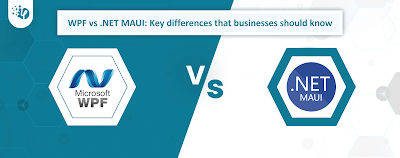In today's world of application development, businesses often struggle to pick the right framework. This blog post highlights the main differences between Windows Presentation Foundation (WPF) and .NET Multi-platform App UI (MAUI).
WPF is a mature framework for building Windows desktop applications with rich graphics and media capabilities. It offers extensive customization, a powerful data binding feature, and a large library of controls, making it a go-to choice for Windows-only applications.
.NET MAUI is a newer, cross-platform framework that enables developers to create applications for Windows, macOS, iOS, and Android from a single codebase. MAUI builds on Xamarin.Forms, enhancing it with better performance, simplified project structure, and more flexible layout options.
The key differences highlighted in the comparison of Maui vs WPF include:
Platform Reach: WPF is limited to Windows, whereas MAUI targets multiple platforms.
Development Ecosystem: WPF is deeply integrated with the Windows ecosystem, while MAUI provides a more versatile environment with support for various operating systems.
Performance: MAUI aims to improve performance over Xamarin.Forms, making it more efficient for multi-platform applications.
Future Prospects: MAUI is positioned as the future of cross-platform .NET development, while WPF remains a strong choice for Windows-centric applications.
For businesses, the decision between Maui vs WPF depends on the scope of their application and target audience. WPF continues to be a robust solution for Windows-specific needs, whereas .NET MAUI offers a modern, flexible approach to cross-platform development.
x



.jpg)
No comments:
Post a Comment